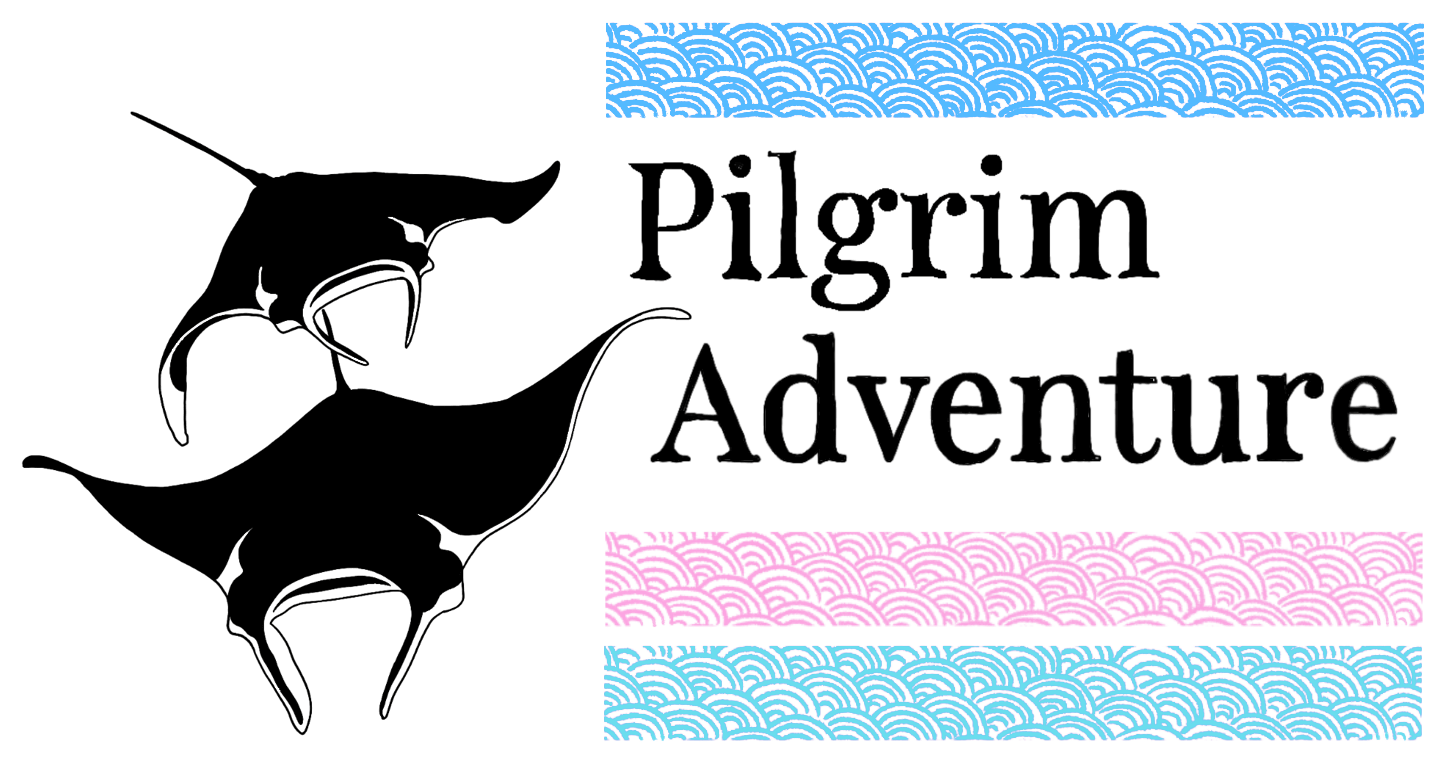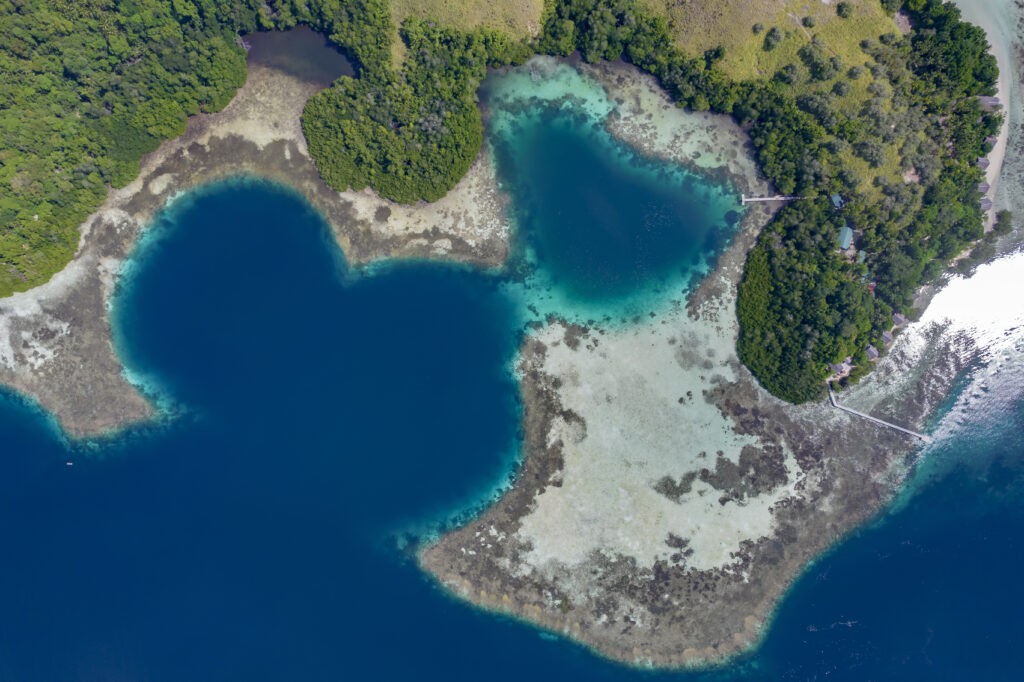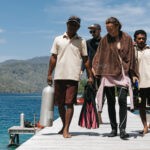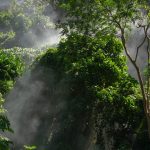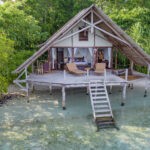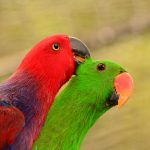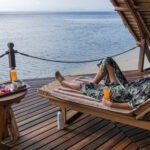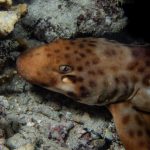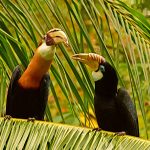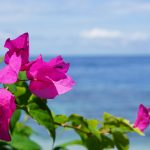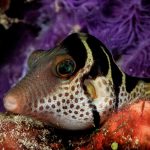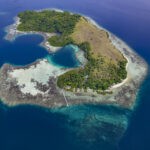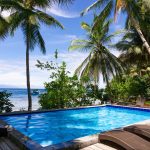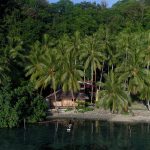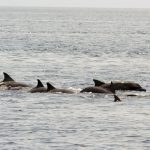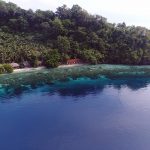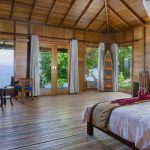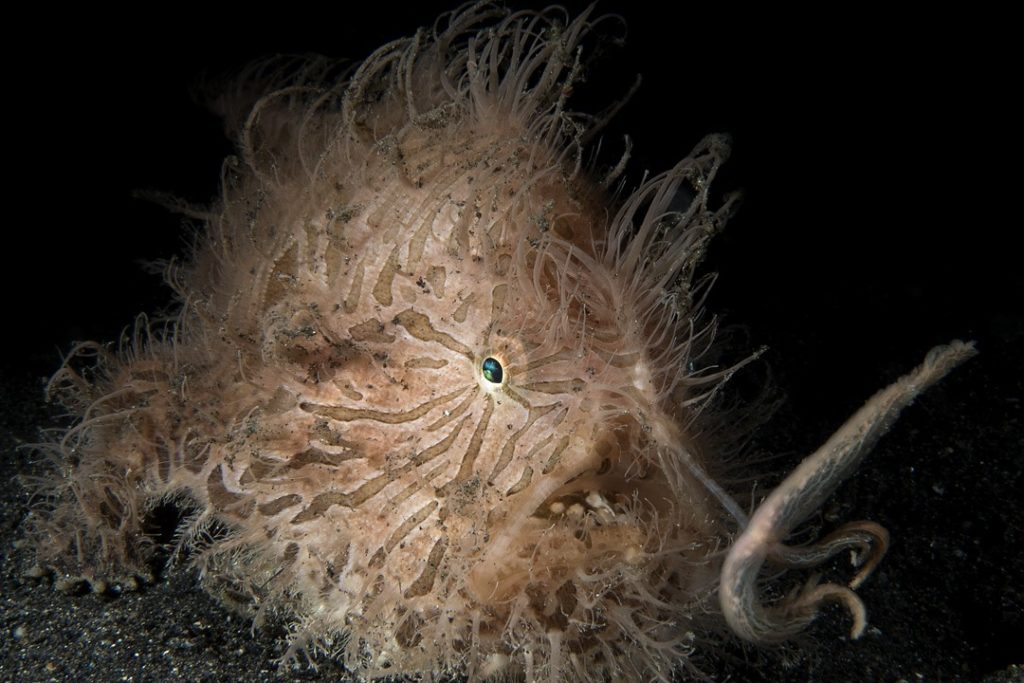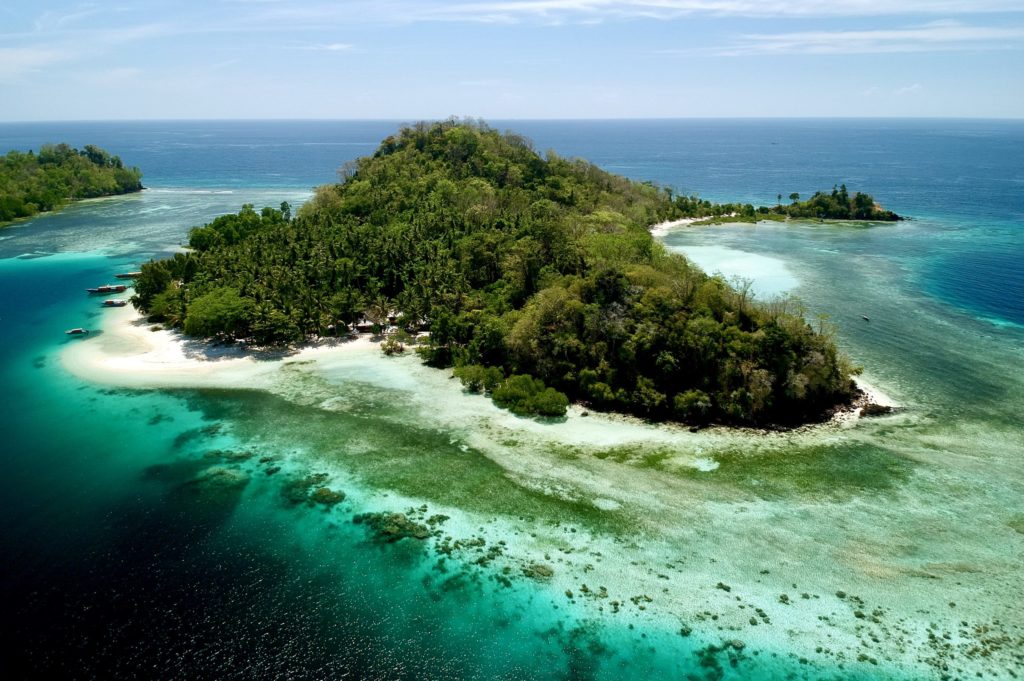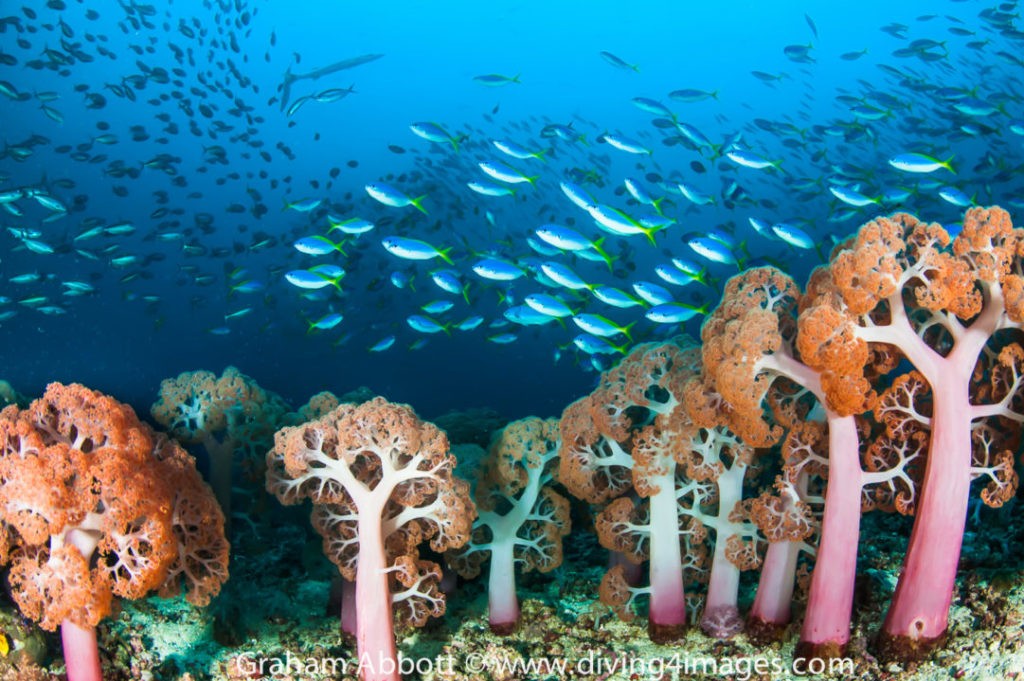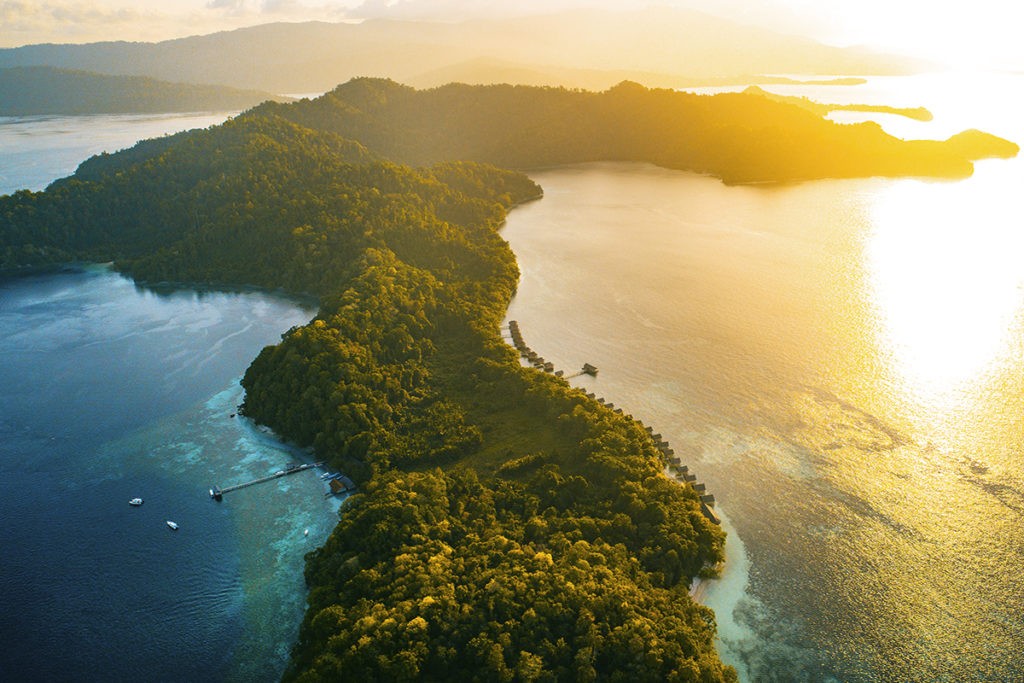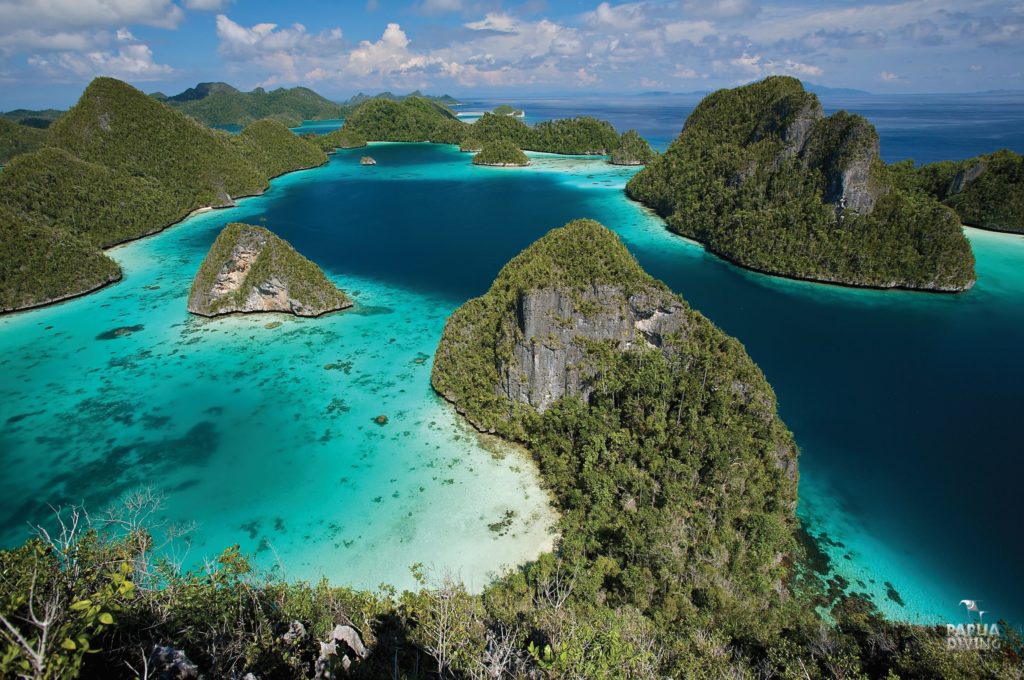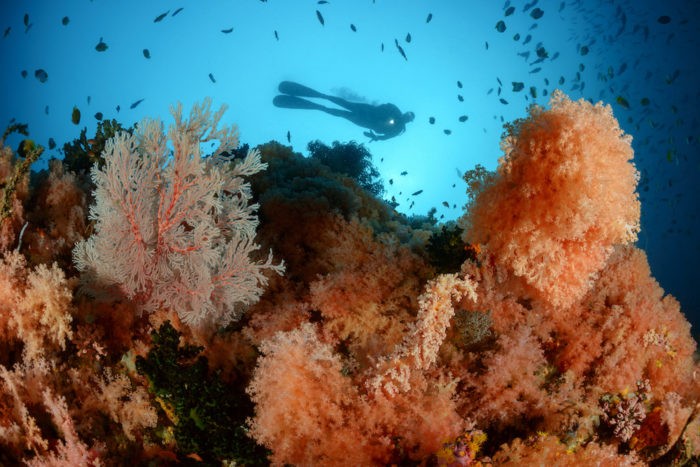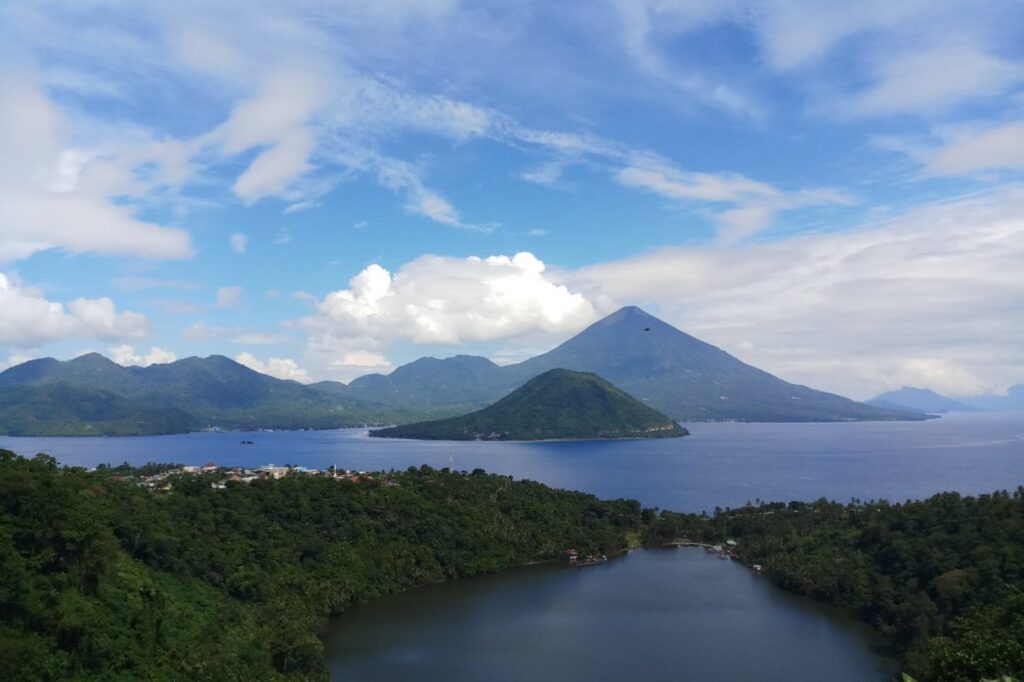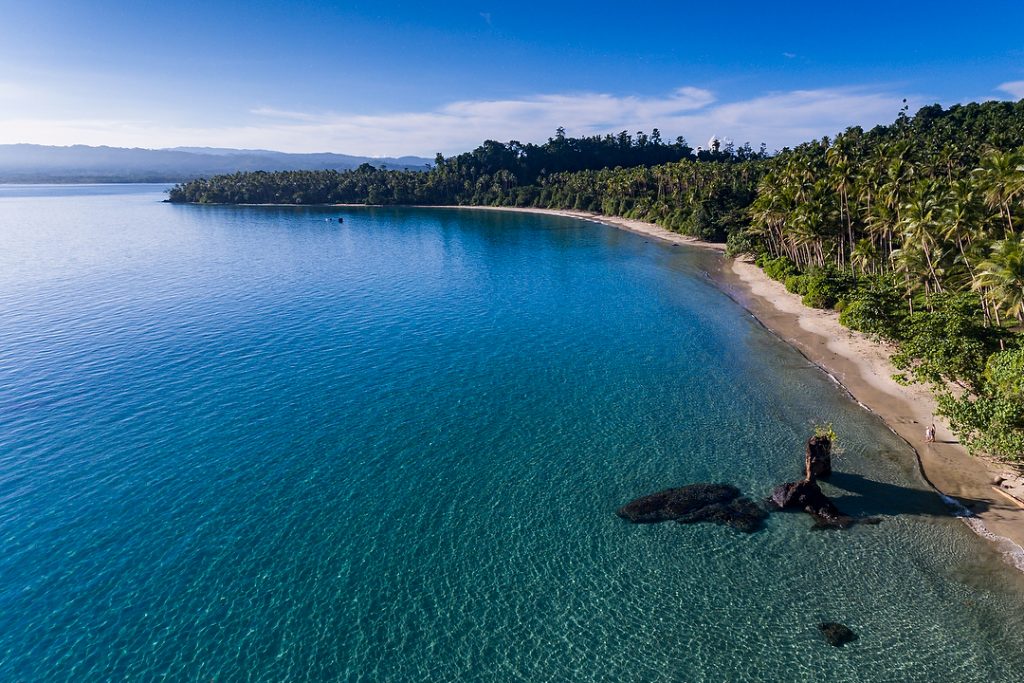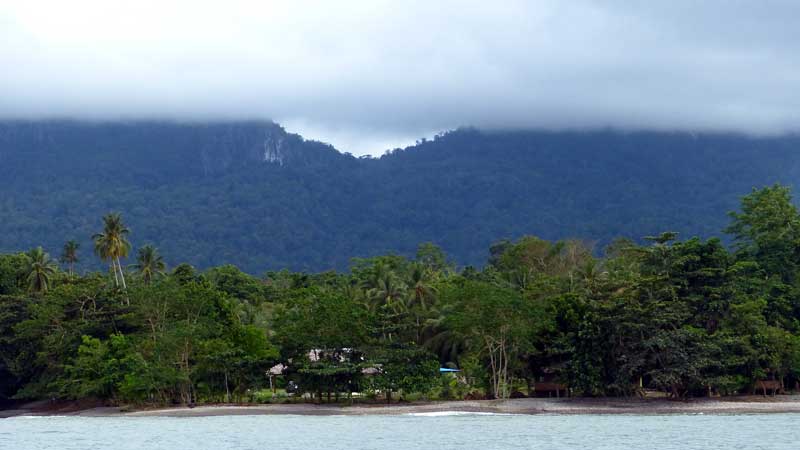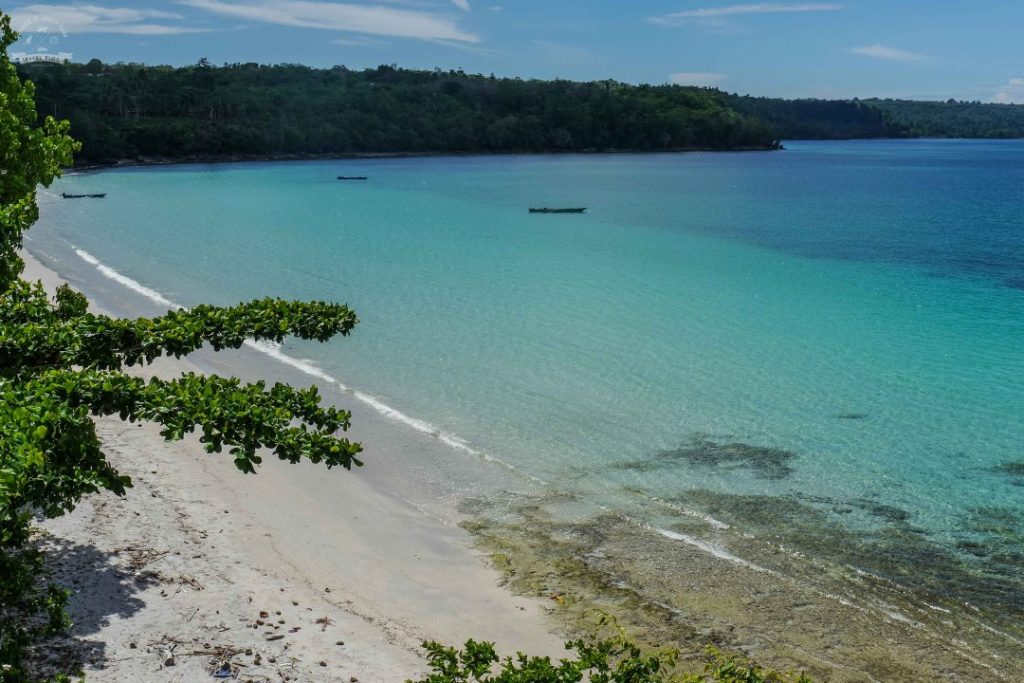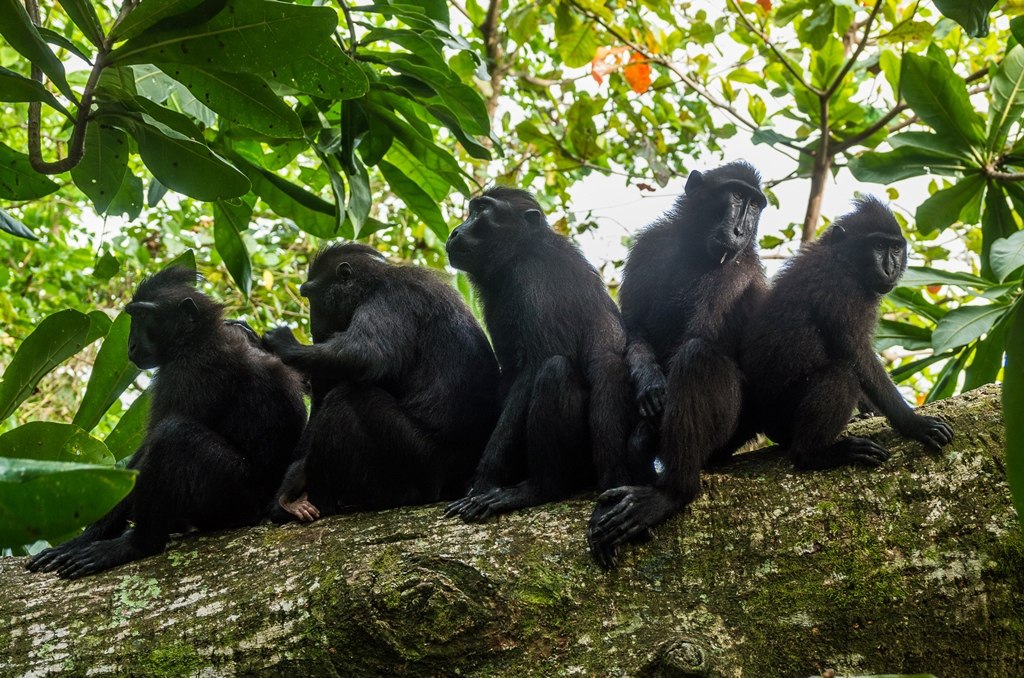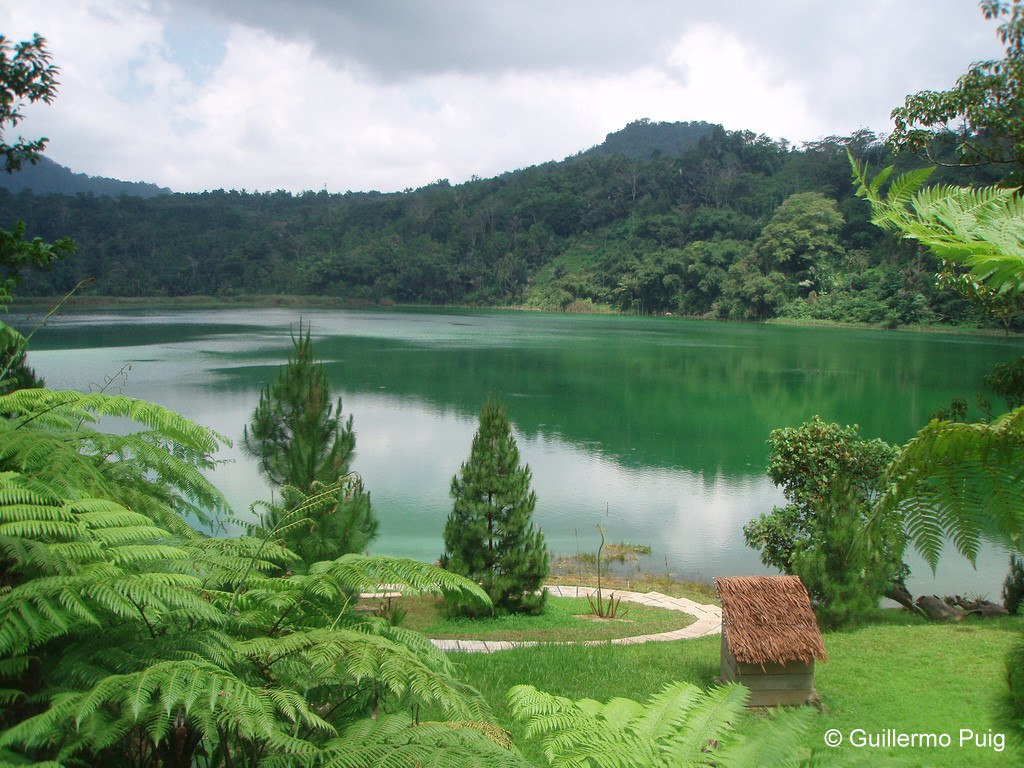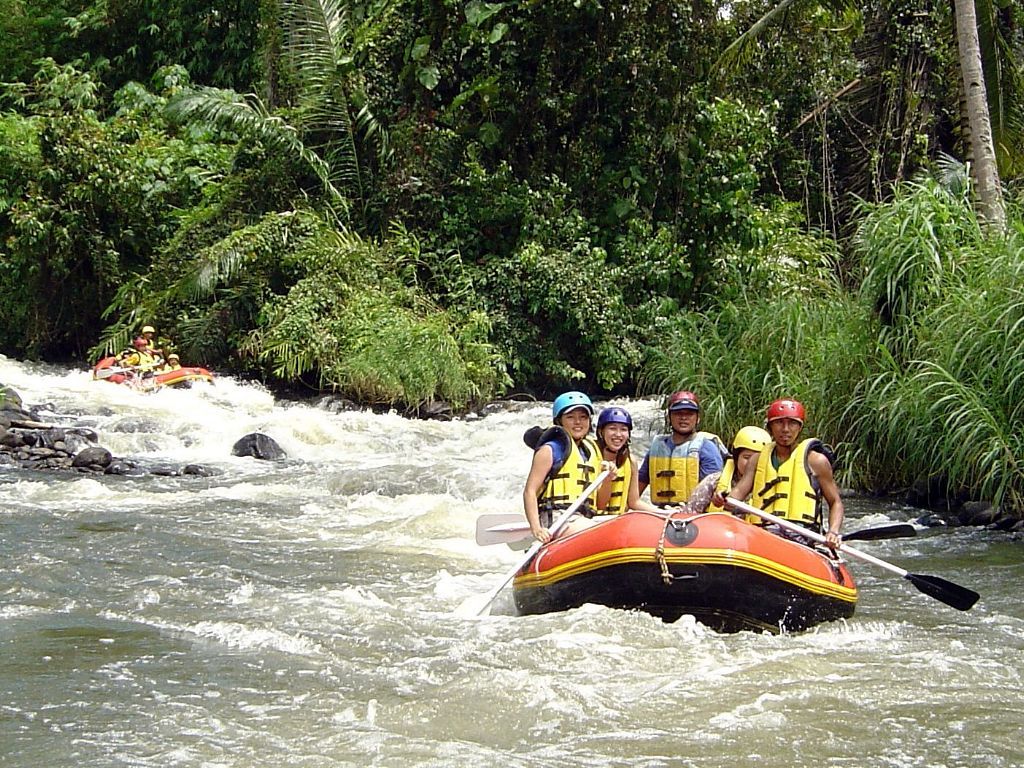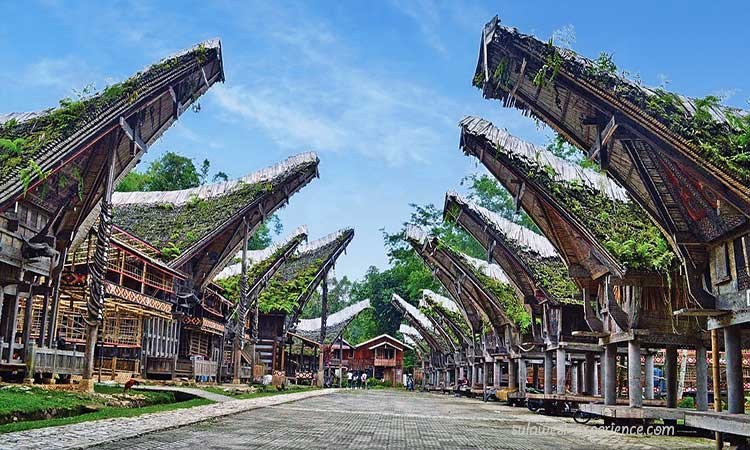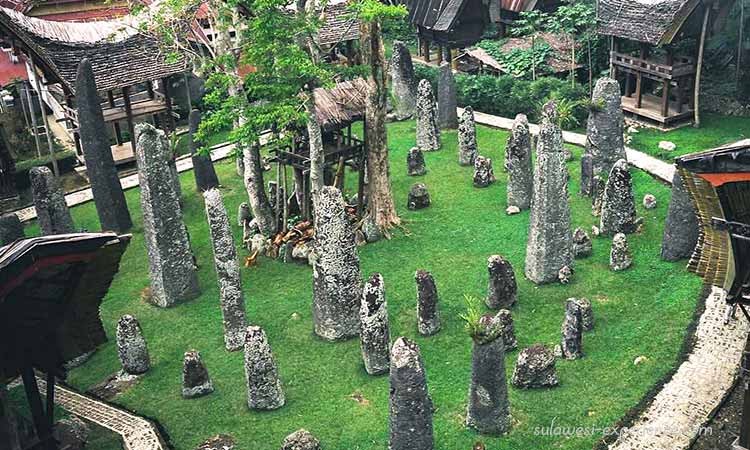North Maluku - Southern Halmahera
- All Year
- Courses
- Nitrox
- Snorkeling
- DIN & Yoke
- Diving
- 16+ Days
Known as the Spice Islands enriched with nutmeg, mace and cloves exclusively found here, which sparked colonial interests from Europe during the sixteenth century. Off the beaten track in the province of North Maluku. White sandy beaches, lush rain forest, beautiful water mangroves as well as an astonishing variety of tropical birds and marine wildlife. Exploration dives are still possible here! Big schools of mackarels, batfish, unicornfish, fusiliers as well as reef sharks call this region their home. Macro enthusiasts can look forward to a range of pygmy seahorses, ghost- and other pipefish, unusual kinds of shrimps and crabs, rare nudibranchs, flatworms and gobies. Very remote and exclusive.
North Maluku - Southern Halmahera
All Year
16 Days From € 3200 / Person
16 Dives From € 800
(Based on double occupancy)
(All Flights Included)
Overview
This region has just recently been discovered for tourism. The reefs are virtually untouched and bristling with marine life. Only a few fortunate divers have been able to enjoy this pristine underwater jewel yet.
Only two dive resorts are in the area – which some people refer to as “the new Raja Ampat.”
The two resorts are located on each their island only 3 km’s apart and both are exceptional and offering to dive the same area of Halmahera.
Located betweem Sulawesi and Raja Ampat – Halmahera thrones as part of the Maluku Islands. From Sali Kecil, meaning small Sali, you can dive a pristine paradise, far off the beaten track!
Being the only dive resorts in Southern Halmehera, you still have the possibility of exploration dives!
In other words: It is an exclusive destination. Far from the traditional touristic routes, wonderfully perfect for enthusiastic divers and nature lovers!
Southern Halmahera’s many bays offer protection for the weather and is 12 months open. The weather and ocean conditions are mostly the same year around – some more rain is to be expected during November to March.
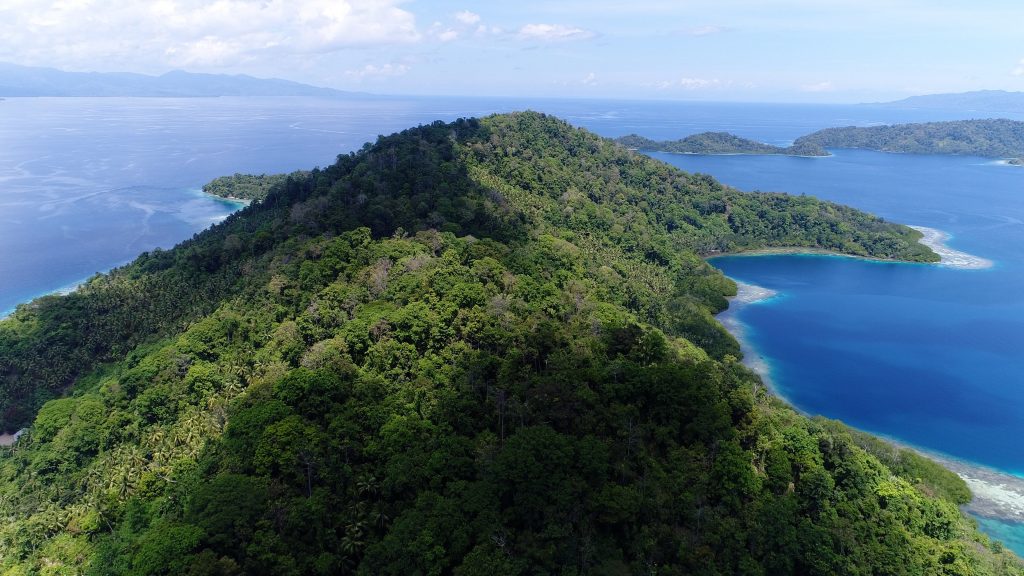
History
Halmahera, formerly known as Jailolo, is the largest island in the Maluku Islands.
It is part of the North Maluku Province of Indonesia and its capital is Sofifi on the West coast.
Halmahera is the largest island outside of Indonesia’s five main islands.
Sparsely-populated Halmahera’s fortunes have long been closely tied to those of the smaller islands.
These islands were both the sites of major kingdoms in the era before Dutch East India Company colonized the entire archipelago.
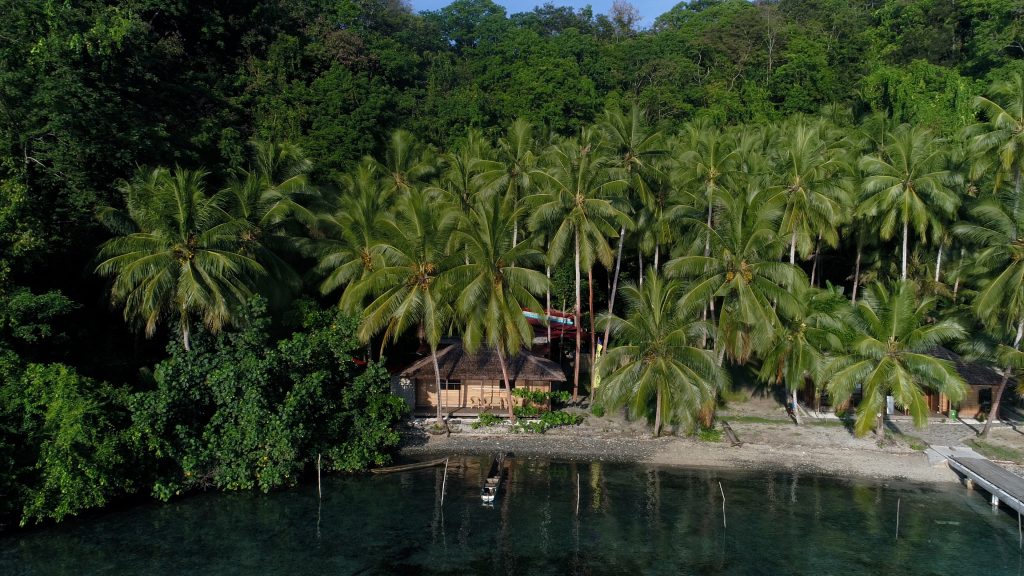
Nature
Located in the heart of the Coral Triangle in South Halmahera, which boasts over 3.000 fish species and 600 coral species. Not only are the islands surrounded by miles of pristine colourful reefs teeming with marine life, but are also located inside a 5-mile marine protection zone.
There are many well-known dive destinations around the globe. What sets Southern Halmahera apart is its exclusivity. Marvel at newly discovered, spectacular and undamaged reefs, with no other divers for miles and dive sites right at the island’s doorstep.
With its magnificent white sandy beaches, lush rain forest, beautiful water mangroves as well as an astonishing variety of tropical birds and marine wildlife, nature lovers can explore the island’s rainforest and mangroves where you can find monitor lizards, butterflies, numerous bird species, wild chickens and other amazing animals.
The volcanic island lies on an island arc that includes the Raja Ampat Islands, all uplifted by the northward migration of the continent of Australia and subduction of the Pacific Plate. Dukono is an active volcano at the north end of the island. Mount Ibu is an active volcano on the island’s northwestern coast.
The naturalist Alfred Russel Wallace visited Halmahera, as described in his 1869 book The Malay Archipelago. He considered the standardwing bird of paradise, Semioptera wallacei, to be his greatest prize. It was in February 1858, on island of Ternate, between the bouts of fever, that a suffering Wallace came to the idea of the natural selection via the survival of the fittest. Wallace wrote his ideas during the next couple of days, and sent the historical letter to Darwin.
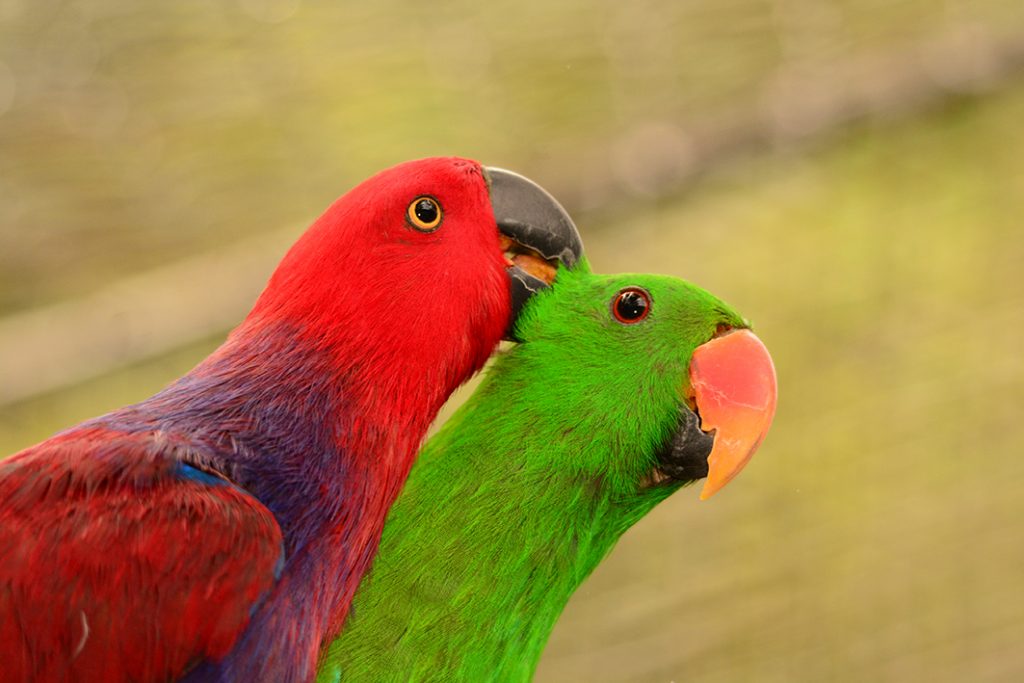
Overview
Discover the heart of the Coral Triangle in South Halmahera. Boasting over 3.000 fish species and 600 coral species. Not only are the islands surrounded by miles of pristine colourful reefs teeming with marine life, it is also located inside a 5-mile marine protection zone.
There are many well-known dive destinations around the globe. What sets Halmahera apart is its exclusivity. Marvel at newly discovered, spectacular and undamaged reefs, with no other divers for miles and dive sites right at the islands’ doorstep.
Recently, the government introduced a 5-mile marine protection zone around our area and the neighbouring islands. Commercial fishing boats are not allowed to enter the area.
Inside this protected area, the amazing underwater world offers everything one can imagine: from big fish like tunas, dolphins, whales, mantas and sharks to large schools of fish down to macro critters like pygmy seahorses. You will have high chances of seeing tuna, dolphins, pilot- and other wales.
The reefs are teeming with life and host hard coral gardens, lush colourful soft corals and gorgonians. The seascape offers walls, slopes, caverns, caves, overhangs, sea grass beds and underwater pinnacles.
Experienced divers can enjoy adrenaline-filled drift dives, while relaxing dives on coral gardens teeming with reef fish are for all divers to appreciate. This underwater heaven is a paradise for underwater photographers, videographers and free divers. At least 40 known dive and snorkelling sites can be reached in less than 15 minutes, many of them located directly along the fringing reefs from the resorts.
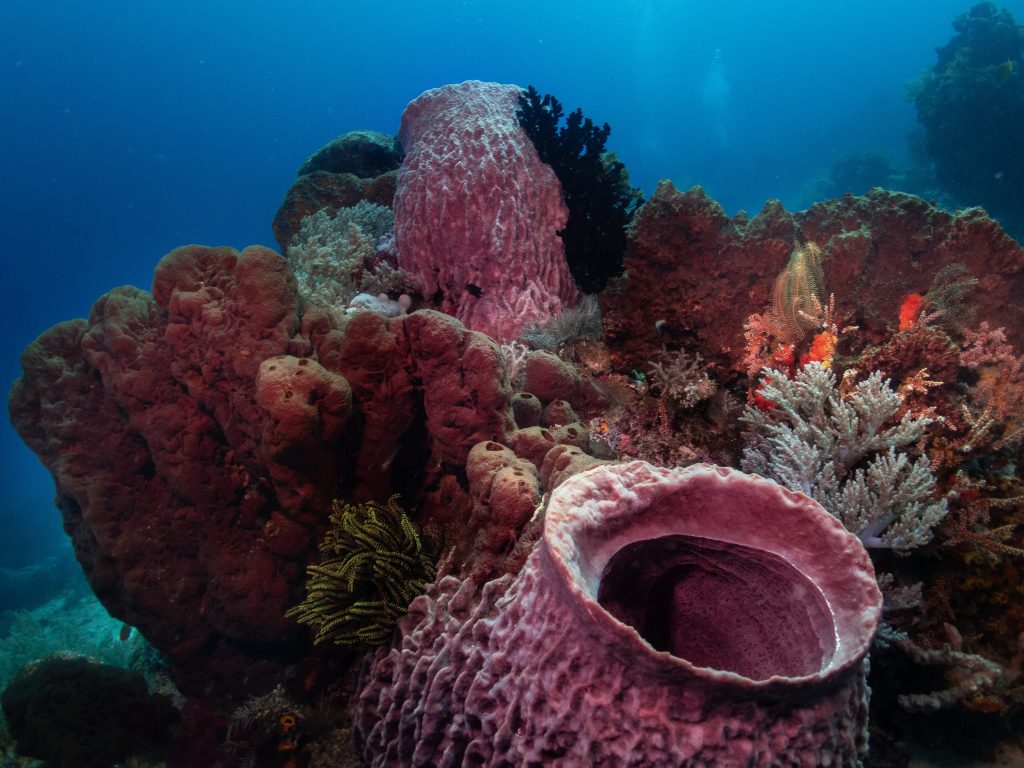
Snorkeling
Southern Halmahera is on of the best places on earth for snorkeling. Alone the House Reefs offers more than 4 hours of snorkeling. You can see Reef-Sharks, Turtles, Sea Snakes, big schools of mackarels, batfishes, unicornfishes and fusiliers.
For the good eyed spotter unusual kinds of shrimps and crabs, rare nudibranchs, flatworms and gobies emerge.
The Night Snorkeling is a must. Good chance to see the Walking Shark of Halmahera. Discovered recently in 2013.
You can also join the boat with divers.
At least 40 known dive and snorkelling sites can be reached in less than 15 minutes, many of them located directly along the fringing reefs.
You won’t have to be an adventurer at heart to enjoy diving this region. The huge biodiversity offers a great mix of coral slopes and muck diving that will ensure unforgettable moments underwater. And the best thing: you’ll have the sites to yourselves.
Right in front as well as in close proximity of the resorts you’ll have high chances of seeing tuna, dolphins, pilot- and other wales.
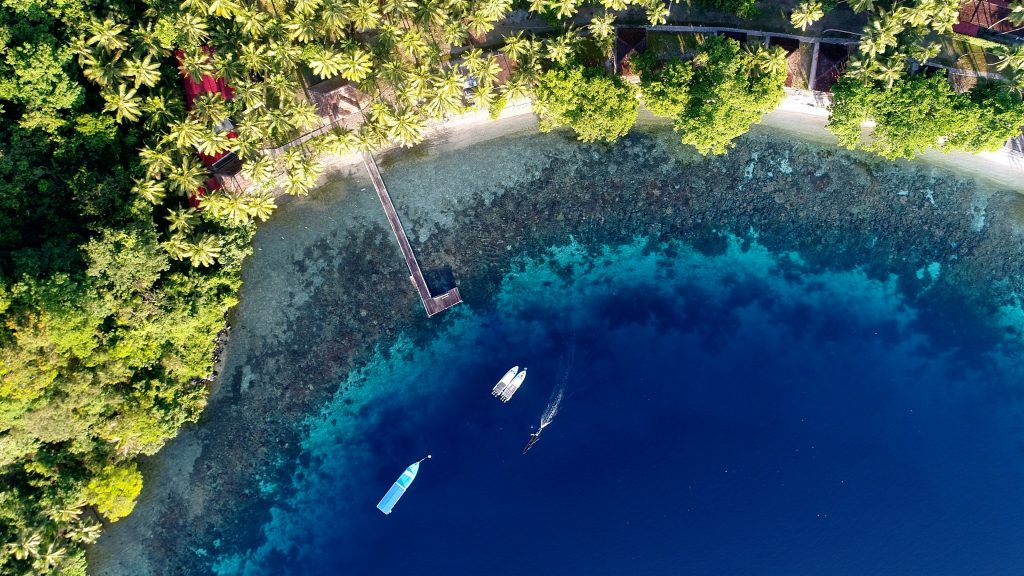
Dive Site Map

Season
Visibility depends on weather conditions. The off shore reefs and sites usually have a visibility of 20 – 40 meters and sites a long the shoreline have 10 – 25 meters visibility.
Water temperature varies very little and you can expect temperatures of 27 – 30 degrees Celsius the whole year through!
Halmahera’s many bays offer protection for the weather and is 12 months open. The weather and ocean conditions are mostly the same around the year, some more rain is to be expected during November – March.
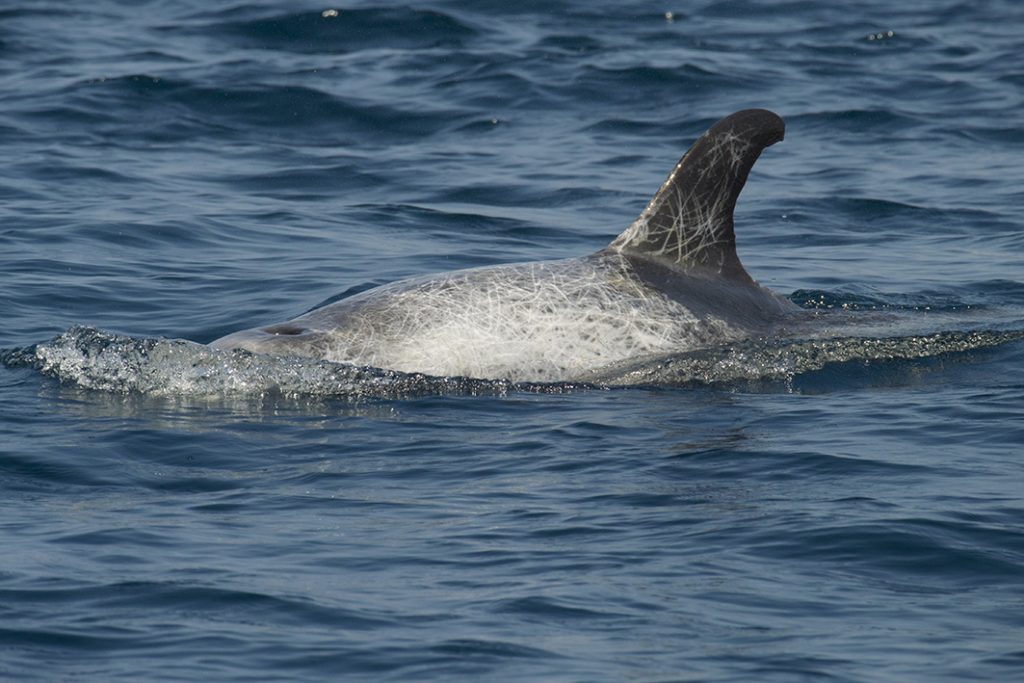
Included
Included
- International Flights
- Domestic flights to & from Ternate / 20 kg’s checked baggage included
- Domestic flights to & from Southern Halmahera
- Airport pick-up by private car (Denpasar, Manado or Jakarta International Airports)
- Car and boat transfers to the resort in Halmahera
- 2 nights in a 4* hotel w/ breakfast
- 11 nights at resort w/ fullboard & free mineral water + hot water for tea/coffee
- Pre-booked Dive Packages
- *Fee to Rejsegarantifonden
- Full package tour – See the benefits of being covered by the Full Package Act and Regulations here
*A Danish Travel Guarantee Fund covering all European citizens in case of bankruptcy: link
Not Included
- “Visa On Arrival” ~ €30
- Dive Packages
- Tips for the staff
- Airport departure tax ~ €10
- Personal Travel Insurances
- Anything not listed in “Included”
A Domestic Flight or Along the Way:
Maluku
Ambon & Banda Neira
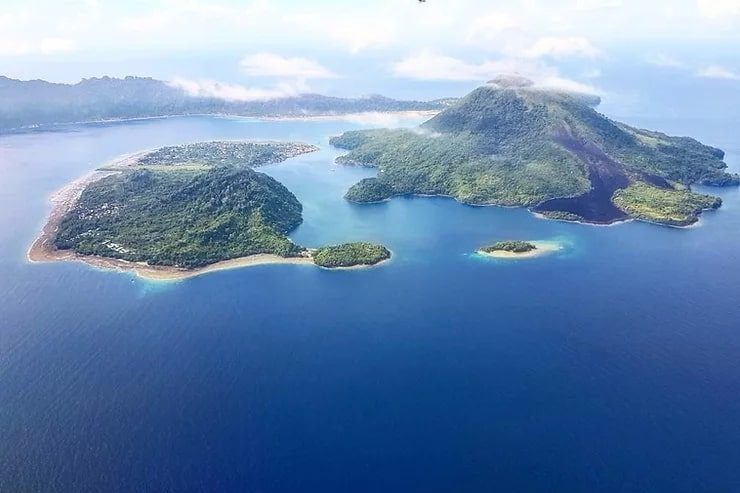
World class critter hunting in Ambon. Lava formations and hammerheads in Banda. One domestic flight further into Maluku.
North Sulawesi
Pulau Bunaken

World-class walls full of turtles, exciting drifts, reef sharks and napoleon wrasses. Along the way via Manado.
South Sulawesi
Pulau Selayar
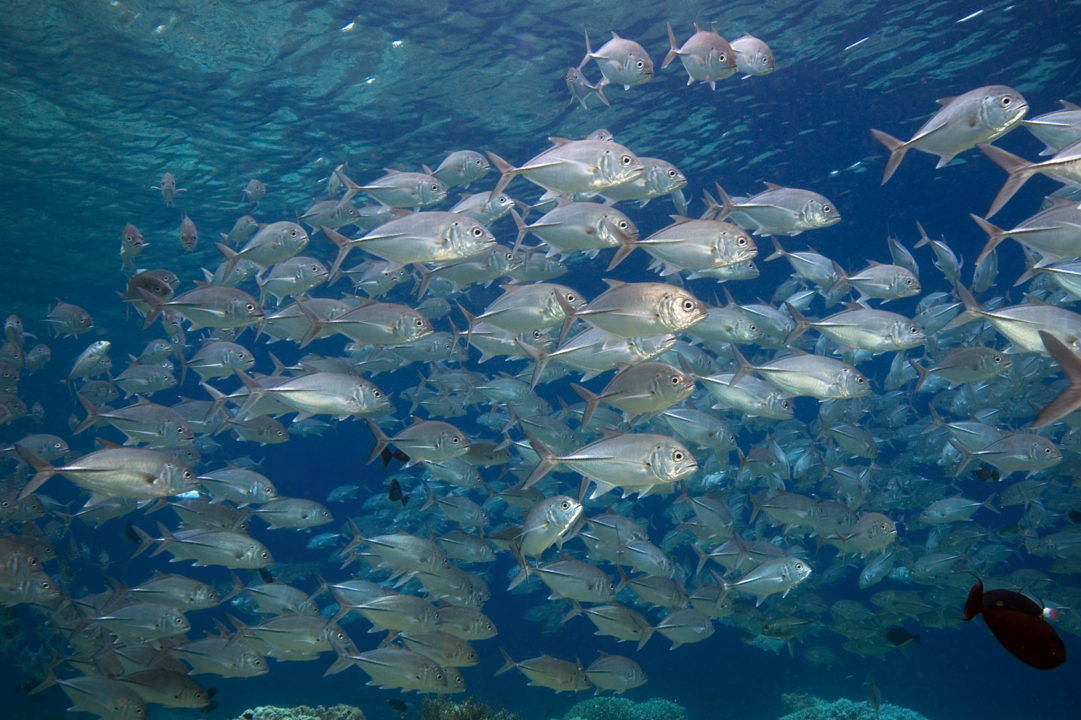
With some of Indonesia’s best reefs and one of the best housereefs found anywhere! Along the way via Makassar.
East Nusa Tenggara
Komodo & Flores
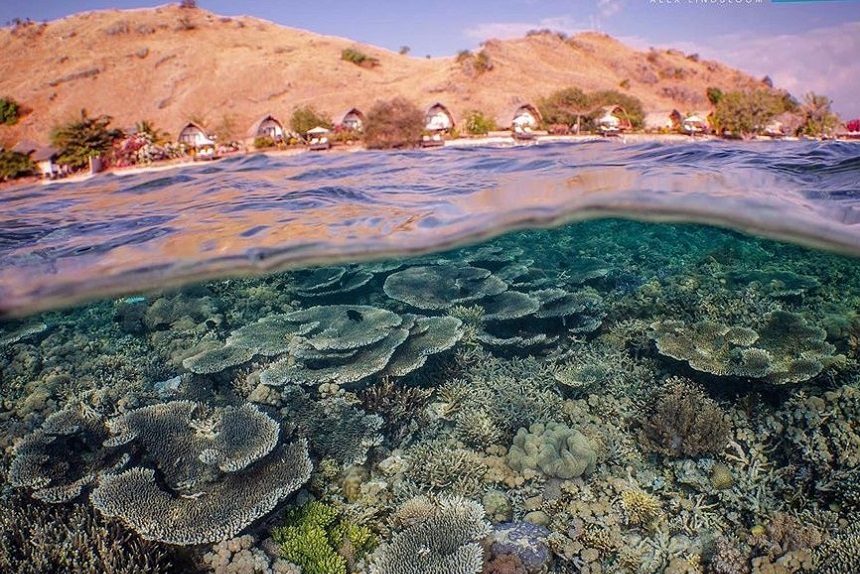
Komodo dragons, strong currents, manta rays, sharks, macro, Unesco Heritage. One domestic flight away via Jakarta.
Maluku:
Our crew will pick you up at Sultan Baabullah airport then heading to the hotel for early check in. Then we will have breakfast at the local restaurant where we will try Nasi Kuning (traditional rice dishes cooked in turmeric and coconut milk). After breakfast, we will visit the Museum and the Castle of the Sultan of Ternate. Inside the Castle there are relics and the oldest Holy Koran in Southeast Asia. Afterwards, we will visit Tolukko Fortress that was built by the Portuguese in 1540. Then we will have seafood lunch. Then we will visit Batu Angus – lava rocks formation from the Gamalama volcano explosion. Then we will visit Big Tolire Lake and Small Tolire Lake. In the afternoon, we will visit Jiko Malamo beach, to snorkel and relaxing. Then heading towards Muara Hotel for rest.
After breakfast, we will head to Bastiong harbour to sail to Filonga island. We will explore the island and snorkel here. Then heading to Tidore island. After lunch, we will visit the Castle of the Sultanate of Tidore, Tahulla fortress and Tore fortress then visit the Tidore’s Ikat production centre. Our trip continue to Gura Bunga village to see the Sowohi traditional houses. Then we will visit Juan Sebastian Del Cano arrival monument. Then in the afternoon we will sail back to Ternate island through Rum harbour. Return to hotel for dinner and rest.
After breakfast, we will visit Laguna Hills Lake to see Tidore island from afar and Maitara Mountain that are located in front of the lake. Then we will go to Kalamata Fortress and Orange Fortress which were built by the Dutch and became the centre of VOC (East Indies Company) headquarter. Then we will head to Sulamahada beach to relax and snorkel. After sunset, we will return to hotel to have dinner and rest.
One short domestic flight further into Maluku.
The only sounds are the sea and the many birds. Except from the fireflies, luminescent mushrooms, stars, the moon and the incredible lighting of the sea, there is no light pollution at all. Nights at the beach are indeed magical.
The very clean, white sandy, 2.000 meters long beach is free of stones or dead corals. Moreover, the sea is very shallow for a long stretch. The reef in front is great for snorkeling and diving. The sandy parts offer good night-dives and critter spotting. There are no buildings at all on the beach.
Groups of dolphins frequently visit the bay. Sea turtles use the beach as their hatching ground, also the almost extinct and bizarre Coconut Crabs made this place their home and are easy to spot.
Beautiful rivers are the home of many birds and butterflies. Although small islands are usually not so rich in bird-life, here we see, among others, Horn-bills, many Common Paradise Kingfishers and Beach Kingfishers. The deeper parts of the river let you have a fresh water bath after the salty ocean.
Walking through the forest and lush gardens is like visiting a ferry-tale. The diversity of trees are huge!
Diving and snorkeling at the untouched reefs surrounding Rao, Morotai and the tenths of small islands at the northern outskirts of Halmahera, Maluku, Indonesia offers you everything you dreamed of!
Walls, slopes, schooling fish, coral gardens and even excellent “critter and macro diving”. In 2018 we found one of the sites which for sure offer the largest amount of huge schools of various fish anywhere: Jacks, Rainbow Runners, Snappers, Surgeon Fish and much more. All together at the same time.
This place is only 2 kilometers away from the beach where you stay. Your guide will be knowledgeable about the currents and the best times to dive. Moreover there is a lot of relaxed, beautiful diving around here in total pristine nature with no other tourists around.
It is possible to do self guided shore dives, under the supervision of the personnel from the beach. Two divers minimum – and perfect for an afternoon dive! Oh, and don’t forget to look out for the rare species of Eapulette Shark or better known as the Walking Shark…!
Arrival is via Pattimura Airport in Ambon, so from Halmahera you need to take a short domestic flight. From Ambon we take the ferry to the main island of Pulau Seram and then continue with our air-conditioned minibus.Surrounded by jungle and away from traffic routes and towns, you can still enjoy pure nature, discover new things above and below water and really let your soul dangle. Off the beaten track, we are the only resort here that offers relaxed diving in small groups with and without a guide. Directly in front of our resort there is an extensive and varied house reef with intact coral formations, huge sponges and various schools of fish as well as an unbelievable macro variety.
Here you can be prepared for surprises, as dolphins, turtles and mobulas are repeatedly sighted.
Our house reef can be easily reached from the beach at any time.
We drive to the surrounding dive sites with our boat, which is suitable for 4 to 6 divers, within 5 minutes. Depending on the spot, night, deep and drift dives are possible.
Since many dive sites have not yet been explored, it is a good idea to go on a discovery tour with us.
There are always filled tanks ready so that you can dive at any time of the day as you wish.
We do not offer courses and do not rent dive equipment. However, we have a limited number of equipment available for emergencies. On request, we can provide a local guide who is familiar with the area.
For nature lovers, we offer guided tours in the vicinity to explore the rich flora and fauna in the partly untouched jungle.
Numerous waterfalls, water cascades and gigantic trees will leave indescribable impressions. Hidden lakes with their incomparable shore vegetation and their biodiversity and hikes on natural, lonely beaches invite you to enjoy.
A short domestic flight from Halmahera to Ambon. From Ambon we take a short boat ride to Saparua.
Saparua is a rarely visited part of Indonesia for tourism, making it an even greater cultural experience. The dive sites surrounding the islands are both macro subjects and corals reefs largely untouched.
Saparua is about an hours boat journey to the east of Ambon – and on the way you pass by the picturesque islands of Haruku and Molana.
Saparua is the largest and most populous of the Lease Islands just east of Ambon, the capital of Maluku province.
With its friendly population (mostly Christian), pretty villages, plentiful historical relics, good beaches and pristine coral reefs, Saparua is an ideal, authentic escape from Ambon.
Saparua has a good network of roads connecting all villages to Saparua town (Kota Saparua) in the island’s centre. Bemos serve most villages, and of course there are ojeks, too. If you explore the island by car or scooter you can visit historical sites such as the semi-traditional baileu village hall or Kota Saparua – the islands sleepy capital.
On the sea-side of Kota Saparua there are attractions such as a large, old Dutch Fort – Duurstede Fort – dating back to the 17th century.
Kota Saparua has a daily market in the town centre, but it gets a whole lot busier on Tuesdays and Saturdays when people come here from all over the island, as well as from neighbouring Nusalaut and Haruku.
This is a good example of a traditional Malukan market, with mostly typical local products / foods – like basketfuls of raw sago.
The village of Ouw in the south-eastern corner of the island is Saparua’s most interesting, offering a number of attractions: a small fort, pottery-making, and two fine beaches (a few kms away).
Other beaches include The West Coast Beach – What locals claim is the finest, longest beach on the island, stretches along its western coast between the villages of Kulur and Porto.
Laino Beach is one of Saparua’s most secluded and finest beaches, with the added attraction of views of Molana Island to the south. A few dedicated locals visit it on weekends, otherwise it is totally deserted.
Saparua is bordered by Seram Island in the north, the Banda Sea in the south and Ambon Island in the west. This location makes remote Saparua surrounded by the deep Banda Sea and due to the depth of the sea, the waters around the Lease islands are very clear.
There is excellent visibility up to 40 metres from February till May and a little less during the more turbid plankton-rich times after the southeast monsoon in August and September. In those months there are enormous numbers of fish and more frequent encounters with larger pelagics.
The dive sites around Saparua, Molana, Nusalaut and Haruku are as interesting as they are varied.
They offer beautiful coral gardens and steep slopes sheltering a variety of colourful fish.
Around Molana and Nusalaut there are spectacular steep slopes along the reef’s edge, decorated with Cup and Soft corals, Sea fans, Sea whips and huge Sponges.
White and Black-tip reef sharks are frequently spotted here.
It is famous for its diversity of reef fish species, and its varieties of healthy hard Corals.
Brain corals, Pore corals, and small Acropora and Table corals thrive in big areas. Then there are many Vase, Tube and Barrel sponges with Featherstars hanging on to every available surface. Many different species of Butterflyfish, Angelfish, Surgeonfish, Groupers, Anthias and even Giant flatheads are to be found. When the conditions are right it is like diving in a huge aquarium.
Some of the lesser known snapper species can be found such as the Pygmy snapper, the red Mangrove snapper, as well as huge Napoleon wrasse and silver Sweetlips.
Many many more different species can show up here. Even hammerhead sharks and different rays. Nature is teeming with life here.A
Via Manado / North Sulawesi:
Easy to read, only 2 hours drive from Manado. Located at the foot of Dua Saudara Mountain, the Tangkoko Nature Reserve is comprised of rolling hills and valleys with a variety of hardwood trees and unusual plant life. The animal life is also quite varied, and one can often view Tarsius tarsier (one of the smallest known primates), black tailless monkeys, snakes, spiders and kuskus (marsupials). Tangkoko Batuangus Reserve offers a suitable protective environment to help prevent these animals from becoming extinct.
Only one hour away from Tangkoko Nature Reserve (on the way) is Tasikoki Wildlife Rescue and Education Centre (www.tasikoki.org). Here you can observe many unique species from Indonesia, as well as several endemic to Sulawesi. All animals have been rescued from the illegal wildlife trade. When taking a tour of the centre (1.5 hours) you will learn about conservation of wildlife and nature as well as the rampant wildlife trade. After visiting the animals you can enjoy a vegetarian meal (with fish) together with the staff as well as the many volunteers from all over the world.
Price: $45/person as add-on only to a Tangkoko Nature Reserve trip.
Visit the Vihara Buddhayana (Buddhist Temple) near Gardenia Country Inn, then heading for the small village of Woloan, where you can see the Minahasan Style Houses being built, knock down style, ready for delivery or shipping. Then continue to the base of Mount Mahawu where we begin the 1-hour trek to the crater’s edge. From that vantage point we can see Bunaken & Manado Tua Islands, as well as the bay of Manado. At the bottom of the crater, one can observe a steaming lake and experience the smell of sulfur from the pools.
Then it’s off to see the traditional food & flower market in Tomohon, surprises in store for you!
You will have lunch at Tondano Lake, close to the goldfish farm, where you will enjoy the serenity of the lake. Then we travel to Pulutan Village, a cottage industry for making pottery or choose the Toraget Hot Springs. At the weaving factories you can observe the local weaving traditions being practiced. Last stop is Lake Linow (the changing color lake), a one of a kind experience.
Gorontalo can be reached by a 1 hour flight from Manado or an 9 hour scenic drive. You would be surprised by what Gorontalo has to offer in its forests with its endemic fauna as well as the unique diving of the Togian Islands.
Nantu Forest is located in the heart of the Wallacea region in Gorontalo Province. Wallacea is the wildlife transition zone between Asia and Australia named after its founder, Alfred Russel Wallace (1823-1913), a famous British biologist, naturalist, and anthropologist.
A community of approximately 30,000 people live within the Nantu and Paguyaman river watershed and is completely dependent on these rivers for its water supply. Nantu’s carbon content is invaluable. Nantu Forest is famous because it is the only place in the world to reliably see its other endemic inhabitants: the Babyrousa celebensis.
The remarkable “prehistoric” appearance of these mammals is largely due to the prominent upwards incurving canine tusks of the males, which actually pierce the flesh in the snout.
One of the most spectacular and thrilling adventure tours in North Sulawesi. The most popular rafting route is on the Nimanga River in Timbukar-Sonder. The grade of the rapids is level 3. You will be picked up at your hotel at 9:00 AM and driven to the village of Sonder (about 1.5 hours from the center of Manado) located in the Minahasan highlands.
Your journey down the 9 km long river will take about one and a half to two hours through scenic forests with a coffee break including traditional cookies. Don’t be shy to scream along the rapids because at the end you will scream for more. Every raft can hold up to six persons including an experienced guide.
After this wet and wild experience, it’s back down the mountain with a lunch stop in a local restaurant. You will arrive at your hotel or the city of Manado (approximately 1.5 hour ride) at approximately 3:00 to 4:00 PM.
Combine Landtours of South Sulawesi
On the southern point of Sulawesi Island, Bira’s nearest access point is through its capital, Makassar. South Sulawesi hosts some of the most beautiful beaches in Indonesia. The accommodation is located on one, and if you rent a motorbike and follow the coast north you will find a number of white, untouched beaches, caves and small islands.
Sulawesi is the largest island of the Wallacea region and hosts at least seven species of macaques that are endemic to the island, some of them occasionally paying a visit to our camp.
Bira is home of the Konjo tribe and the heart of maritime culture in Indonesia. The Birians have been sailors for as long as history has been recorded. To this day, shipbuilding and sailing remain the central focus of daily life and identity. About 70 percent of the population in Bira and surrounding villages make a living through work related to boatbuilding and navigation.
Diving Bira you will meet turtles, moray eels and quite a variety of small critters such as mantis shrimp, anemone shrimps, scorpion fish, a variety of nudibranches and much more. Pelagic species are trevallies hunting on the reefs. Other pelagics that are sometimes seen around Bira are thresher sharks, bull sharks, tiger sharks, hammerheads, tunas, barracudas, giant marble rays, manta rays, sunfish / mola mola and even whale sharks at the right time of the year. July to October seems to be having the most of these pelagic encounters – this is also when the water temperature drops a bit.Scuba Diving in Bira is done from April to November.
- Best diving conditions to witness pelagic life including bigger sharks, mola mola and manta will be in late summer when the water gets colder. This happens from July onwards to October. But of course no guarantees can be made on behalf of nature.
Day 01 : Makassar Arrival – Toraja (LD).
Meeting service at Sultan Hasanuddin Airport Makassar, then directly trip to Tana Toraja. The trip will pass some regencies in distance of 310 km (it’s about 8 – 9 hour drive from Makassar). On the way you’ll enjoy the beautiful rice field, fish pool and the Traditional Houses of Bugisnese which is adorn on the right and left side of the main road. Lunch will be at Pare-pare, one of the regencies we passing by in the distance of 175 km. After lunch the trip will be continue and will arrive in Tana Toraja about late noon, then check-in to hotel, dinner at the local restaurant, free program.
Day 02 : Toraja Tour – Batutumonga (BLD).
After breakfast at Hotel, check out then visiting Traditional weaving village at Sa’dan, traditional Toraja village with buffalo horns in front of their houses in Palawa then start trekking to Batutumonga its magnificent and fascinating mountain, rice terrace, coffee and cacao plantation, and green trees surrounding will give the trip more impressive one. By chance, you will meet the local people doing their activities in traditional way. Lunch will be served en-route with simple style. Afternoon arrive in Batutumonga, check-in at Guest house / Homestay, dinner and overnight at Batutumonga.
Day 03 : Batutumonga – Pana – Sariale Trekking (BLD).
Simple breakfast at Guest house or Homestay, check out, process to Pana Village for start the trekking in the country side through traditional farm, Torajan villages etc .. on foot. Lunch will be served en-route with simple style. During trekking you will find a beautiful landscape, paddy field, traditional Toraja houses, local people daily live and more. Upon arrive at Sariale Village, pick up then transfer to hotel for check in. Dinner at the local restaurant.
Day 04 : Toraja Fullday Tour (BLD).
Buffet breakfast at hotel, starting Toraja tour to visit The cliff-side stone grave with wooden effigies on the balcony at Lemo, the royal family tombs at Suaya, Ke’te Kesu (traditional wooden carving village and hanging grave), then lunch at local restaurant. After lunch continue the tour to visit Londa (the natural cave grave) and Marante (is a village where a lot of Tongkonan House, big paddy barns and big rocky hill containing hanging stone graves which the located called “Erong”). Afternoon back to the hotel, Dinner at the local restaurant, free program.
Day 05 : Toraja Fullday Tour (BLD).
Buffet breakfast at hotel, starting tour to visit Pallawa (The most beautiful village with buffalo horns in front off their houses), Kambira (Baby grave) then lunch at the local restaurant after that continue the tour to visit Lokomata (the boulder grave) then visit Sa’ dan To’Barana, the traditional cotton weaving village. Afternoon back to the hotel, Dinner at the local restaurant, free program.
Day 06 : Toraja – Makassar Departure (BL).
Buffet breakfast at hotel, check out then leaving to Sultan Hasanuddin Airport Makassar. The trip will be take about 8 – 9 hour drive. Lunch will be served at the local restaurant in Pare-pare, afternoon arrival at Sultan Hasanuddin Airport for flight back to home or others destination. End program.
Day 01 : Makassar Arrival – Toraja (LD).
Meeting service at Sultan Hasanuddin Airport Makassar, then directly trip to Tana Toraja. The trip will pass some regencies in distance of 310 km (it’s about 8 – 9 hour drive from Makassar). On the way you’ll enjoy the beautiful rice field, fish pool and the Traditional Houses of Bugisnese which is adorn on the right and left side of the main road. Lunch will be at Pare-pare, one of the regencies we passing by in the distance of 175 km. After lunch the trip will be continue and will arrive in Tana Toraja about late noon, then check-in to hotel, dinner at the local restaurant, free program.
Day 02 : Toraja Fullday Tour (BLD).
Buffet breakfast at hotel, starting Toraja tour to visit Kete’ Kesu (traditional wooden carving village and hanging grave), Marante (is a village where a lot of Tongkonan House, big paddy barns and big rocky hill containing hanging stone graves which the located called “Erong”), Bori menhir stones, soared up several meters above the land and then lunch at local restaurant, after wards continue tour to visit Pallawa (The most beautiful village with buffalo horns in front of their houses) and Lokomata (the boulder grave) then visit Sa’dan To’Barana, the traditional cotton weaving village. Afternoon back to the hotel, dinner at the local restaurant, free program.
Day 03 : Toraja Fullday Tour (BLD).
Buffet breakfast at hotel, starting Toraja tour to visit Londa (the natural cave grave), Lemo The cliff-side stone grave with wooden effigies on the balcony, the royal family tombs at Suaya then lunch at local restaurant. Afterwards continue tour to visit Kambira (Baby grave) and Sangalla, village lying among the leafy bamboo trees and the tomb of King Sangalla. Afternoon back to the hotel, dinner at the local restaurant, free program.
Day 04 : Toraja – Makassar Departure (BL).
Buffet breakfast at hotel, check out than leaving to Sultan Hasanuddin Airport Makassar. On the way we will stop to visit the Jesus statue, which is known as one of the highest statues in World, than continue trip back to Makassar. Lunch will be served at the local restaurant in Pare-pare, afternoon arrival at Hasanuddin airport for your flight to the next destination.
Q & A
Yes beginners can dive here. There are so many dive sites and all types of topography. Many have little to no current, others can be drift dives or medium current.
The boat leaves for two dives, and the boat rides are between 5-30 minutes.
Great! Courses are available upon request.
Please contact us for further details.
Remember courses must be pre-booked.
We recommend booking the dives as a package. This will give you a better price to pre-book. However, you can dive a-la-carte if you wish!
The resorts have both DIN and International (Yoke) fitting valves on the scuba tanks.
The Atm’s are very far from the resort.
There is a hospital in Labuha on Halmahera.
Halmahera should still be considered a remote destination. The medical facilities are limited. Emergency evacuations may take 12 hours to the nearest major hospital in Makassar.
Therefore, a full travel insurance that covers possible evacuations AND diving accidents, is required for all our guests. We recommend including cover for any cancellations e.g. flights as Indonesian airlines are known for changing or even cancelling their flights rather frequently.
Malaria is present in the Maluku islands. See our “About” menu how to prevent malaria. When that is said, there are not many mosquitoes at the resorts, as the ocean breeze helps. Each bed has its own mosquito net.
Gastrointestinal diseases: Make sure you have some rehydration salts and basic medicines on hand. (Consult your doctor regarding appropriate medicines before you go.) Anti-diarrhea medicines like Imodium are best taken only if you have to travel – they only treat symptoms, not causes. Drinking only boiled or otherwise purified water will greatly reduce your chances of stomach troubles. You can read more about drinking water here.
Skin and wound infections: You should clean and treat even small wounds immediately with an antiseptic, and then examine them regularly for signs of infection. Especially if they are coral scrapes, which are notorious for going septic. Keeping wounds dry until healed is also good practice, but it’s a big ask when you’re on a short stay in the islands. Fungal infections love a tropical environment too, so you might want to consider having some antifungal medicine in your first aid kit.
Ear infections: Spending a lot of time with water in your ears in the tropics raises the risk of ear infections, so if you’re concerned pack an appropriate medicine.
Japanese Encephalitis and Dengue Fever: These mosquito-borne diseases have been reported from Flores and are present more or less all over Indonesia and most of South East Asia. You might want to consider vaccination for Japanese Encephalitis. Avoiding mosquito bites is the only protection available against Dengue Fever.
Tropical diseases: All tropical environments harbour parasites and pathogens not found elsewhere. You’re extremely unlikely to come into contact with any of those during a short holiday in Indonesia, but if you suffer any persistent or recurrent symptoms that can’t be diagnosed or aren’t relieved by standard medical treatment – even if those symptoms appear months after your visit – you should consult a tropical diseases specialist.
See our “About” page to know more about prevention of moscuito bites.
For further reading on health: https://www.iamat.org/country/indonesia
